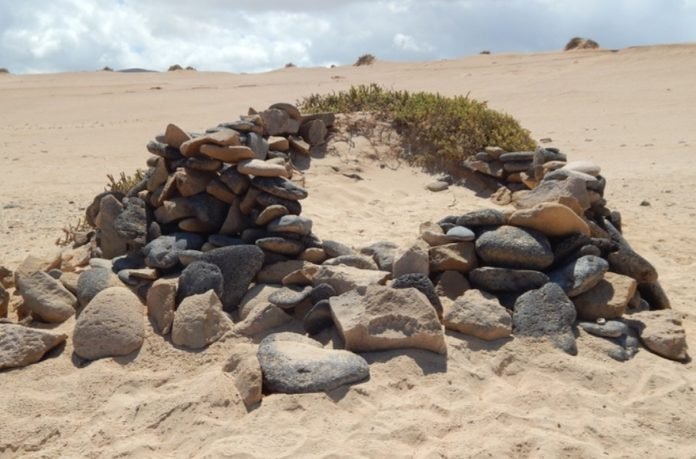
Casual sexual encounters on holidays make for lifelong memories, but the imprint left behind can be less desirable.
Sex tourism is a big drawcard for exotic holidays around the world, including the Canary Islands, a small Spanish archipelago located off the coast of northwest Africa, where coastal and dune field geographers and geomorphologists are warning of widespread damage to the fragile landscape.
The experts from the University of Las Palmas de Gran Canaria (ULPGC) and Australia’s Flinders University have selected a well-known tourism location in the Canary Islands to highlight the environmental impacts on an environmental protected coastal location that has become a site for ‘cruising’ anonymous sexual encounters.
Gran Canaria is a popular tourism destination in Europe, with many resorts appealing to this lucrative market located near the Dunas de Maspalomas Special Nature Reserve.
Human activities have a considerable impact on arid dune fields, and ecosystem management is critical for future generations to enjoy such locations, says Dr Leví García-Romero, first author of a new article in the Journal of Environmental Management.
“We have no intention to criticize the actions of some of the LGBTI community,” he says.
“We have conducted many studies on the vegetation in the foredunes fronting coastal dune fields of the arid northwest African and Canara Islands coasts,” says Dr Garcia-Romero, from the ULPGC Institute of Oceanography and Global Change.
“In this one location in Gran Canaria, we found that sex sports in places of bushy, dense vegetation and ‘nebkhas’ (vegetated dune hummocks) were having a significant impact on the aeolian landforms and native plants there, including waste left behind.”
The study found that 10 plant species were impacted, eight of which are native and three endemic to the hot, dry, and saline type of dunes of the Canary Islands.
Researchers say ongoing research will contribute to cleanup campaigns, such as the MASDUNAS environmental project, and closer management of waste and access points into protected areas such as the Dunas de Maspalomas nature reserve – now extensively used for the ‘5 Ss’ (sand, sun, sea, and sex with strangers).
The study also found many unauthorized narrow (20-30cm wide) paths created by constant trampling of cruisers looking for others to engage in sexual activity, adds second author Dr Carolina Peña Alonso from the ULPGC.
“Cruisers seem to have acquired rights for sexual encounters in an environmentally protected public space, ‘privatizing’ the exclusion and restricted usage zones where the environmental education (a permitted use) is now disabled,” says co-author Dr. Luis Hernández-Calvento, also from the ULPGC Institute of Oceanography and Global Change.
“No matter what the human activity, popular coastal tourist locations need to closely monitor ecology and erosion trends,” says co-author Professor Patrick Hesp, from Flinders University, who also studies Australian arid-zone coastal and inland dunefields.
Maspalomas is not the only dune space that registers this type of activity in the world, he says, so we need to raise awareness about patterns of the effects of cruising on dune systems with environmental protection. Some sex spaces have been detected in Australia.
Beach use and management can result in long-term changes in beach-dune systems, the authors warn.
“Incorporating targeted research with tourist location natural resource management can lead to more sustainable action, particularly in areas of large-scale tourism and fragile ecosystems, so future generations can enjoy these ecosystems,” Professor Hesp says.
“It is also important to highlight how the environmental state of the space affects the user experience and how the environmental management measures taken can balance the socioeconomic long-term interests of the site.”



